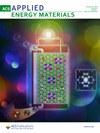联合使用生物炭和泥炭藓缓解烟草的干旱胁迫
IF 5.4
3区 材料科学
Q2 CHEMISTRY, PHYSICAL
引用次数: 0
摘要
干旱对生态环境构成了严重威胁,限制了全球农作物的产量。本研究的目的是考察在干旱条件下,土壤中施用生物炭(BC)和泥炭藓(PM)对烟草植株形态生化和质量性状的影响。在本实验工作中,对烟草植株进行了两级干旱严重程度(~浇水充足 75 ± 5% 田间能力)和严重干旱胁迫(~ 35 ± 5% 田间能力)、两级泥炭藓(PM)@ 5%[PM+(含泥炭藓)和 PM-(不含泥炭藓)]和三级稻草生物炭(BC0 = 无生物炭;BC1 = 150 mg kg- 1;BC2 = 300 mg kg- 1 的土壤)的盆栽试验。结果表明,干旱条件严重影响了烟草植株的表现。然而,将生物碳和可吸入颗粒物结合使用,可显著改善烟草的生长、生物量、总叶绿素含量(27.94%)和类胡萝卜素含量(32.00%)。该研究进一步表明,干旱条件下,脂质过氧化物的产生和脯氨酸的积累都有所减少。但在对照和干旱胁迫条件下,施用 BC 和 PM 的协同方法分别增加了可溶性糖(17.63% 和 12.20%)、可溶性蛋白质(31.16% 和 15.88%),减少了脯氨酸积累(13.92% 和 9.03%)和 MDA 含量(16.40% 和 8.62%)。此外,在干旱胁迫条件下,联合施用 BC 和 PM 还能通过限制氯离子(33.33%)提高叶片钾含量(19.02%)。总之,均衡施用 PM 和 BC 是提高烟草植物抗旱能力的有效方法和可持续方法,具有巨大的潜力。这项研究独特地强调了 PM 和 BC 作为一种生态友好型策略在提高植物在干旱条件下的抗逆性方面的综合潜力,为可持续农业实践提供了新的见解。本文章由计算机程序翻译,如有差异,请以英文原文为准。
Combined application of biochar and peatmoss for mitigation of drought stress in tobacco
Drought poses a significant ecological threat that limits the production of crops worldwide. The objective of this study to examine the impact of soil applied biochar (BC) and peatmoss (PM) on the morpho-biochemical and quality traits of tobacco plants under drought conditions. In the present experiment work, a pot trial was conducted with two levels of drought severity (~ well-watered 75 ± 5% field capacity) and severe drought stress (~ 35 ± 5% field capacity), two levels of peatmoss (PM) @ 5% [PM+ (with peatmoss) and PM- (without peatmoss)] and three levels of rice straw biochar (BC0 = no biochar; BC1 = 150 mg kg− 1; and BC2 = 300 mg kg− 1 of soil) in tobacco plants. The results indicate that drought conditions significantly impacted the performance of tobacco plants. However, the combined approach of BC and PM significantly improved the growth, biomass, and total chlorophyll content (27.94%) and carotenoids (32.00%) of tobacco. This study further revealed that the drought conditions decreased the production of lipid peroxidation and proline accumulation. But the synergistic approach of BC and PM application increased soluble sugars (17.63 and 12.20%), soluble protein (31.16 and 15.88%), decreased the proline accumulation (13.92 and 9.03%), and MDA content (16.40 and 8.62%) under control and drought stressed conditions, respectively. Furthermore, the combined approach of BC and PM also improved the leaf potassium content (19.02%) by limiting the chloride ions (33.33%) under drought stressed conditions. Altogether, the balanced application of PM and BC has significant potential as an effective approach and sustainable method to increase the tolerance of tobacco plants subjected to drought conditions. This research uniquely highlights the combined potential of PM and BC as an eco-friendly strategy to enhance plant resilience under drought conditions, offering new insights into sustainable agricultural practices.
求助全文
通过发布文献求助,成功后即可免费获取论文全文。
去求助
来源期刊

ACS Applied Energy Materials
Materials Science-Materials Chemistry
CiteScore
10.30
自引率
6.20%
发文量
1368
期刊介绍:
ACS Applied Energy Materials is an interdisciplinary journal publishing original research covering all aspects of materials, engineering, chemistry, physics and biology relevant to energy conversion and storage. The journal is devoted to reports of new and original experimental and theoretical research of an applied nature that integrate knowledge in the areas of materials, engineering, physics, bioscience, and chemistry into important energy applications.
 求助内容:
求助内容: 应助结果提醒方式:
应助结果提醒方式:


